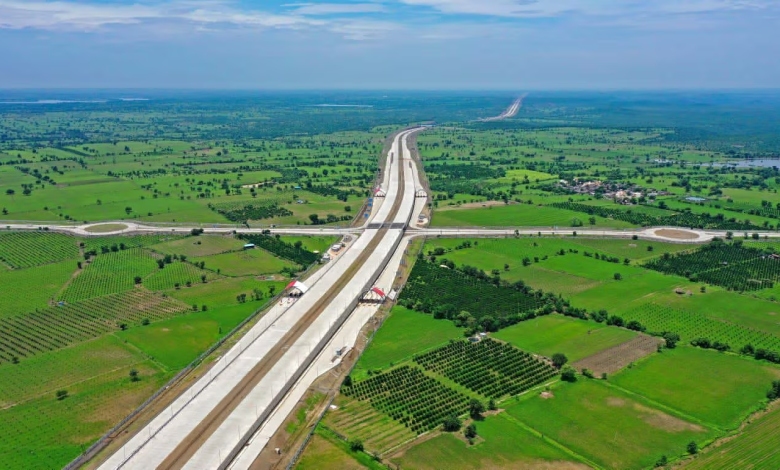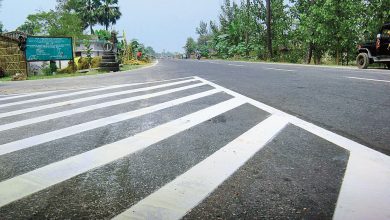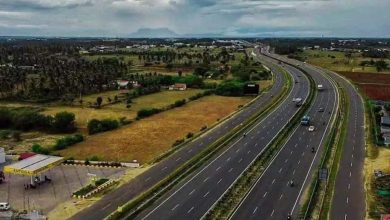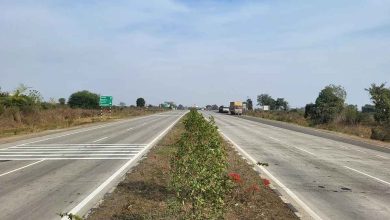Mumbai-Nagpur Expressway’s Last Phase Expected to Be Completed by September-End

Mumbai-Nagpur Expressway Completion: The long-awaited Mumbai-Nagpur Expressway, also known as the Hindu Hrudaysamrat Balasaheb Thackeray Maharashtra Samruddhi Mahamarg, is nearing its final milestone. The entire 701-km-long expressway, which has been a key infrastructure project in Maharashtra, is set to be fully operational by the end of September. This marks a significant achievement for the state, as it will provide a faster and more efficient travel route between Mumbai and Nagpur, reducing the journey time from 18 hours to just 8 hours.
Introduction to the Mumbai-Nagpur Expressway
The Mumbai-Nagpur Expressway is not just any road; it’s a transformative infrastructure project that aims to enhance connectivity between two of Maharashtra’s largest cities. With the final phase covering a 76-km stretch expected to be completed by September-end, this expressway is set to become a vital link for commuters, businesses, and the economy at large.
Project Overview (Mumbai-Nagpur Expressway Completion)
What is the Samruddhi Mahamarg?
The Samruddhi Mahamarg is a 6-lane, access-controlled expressway designed to provide a seamless travel experience. The expressway stretches 701 km, connecting Mumbai in the west to Nagpur in the east, passing through 392 villages in 10 districts. It’s the second major expressway project in Maharashtra after the Mumbai-Pune Expressway.
The Vision Behind the Project
Announced in 2015, the expressway is a greenfield project aimed at improving connectivity, reducing travel time, and boosting economic development in the region. The project is being implemented by the Maharashtra State Road Development Corporation (MSRDC) and is a significant investment in the state’s infrastructure, with an estimated cost of ₹55,000 crore.
Final Phase: The Most Challenging Stretch
Overview of the Last Phase
The final 76-km stretch between Igatpuri in Nashik district and Aamne in Thane district is perhaps the most challenging part of the entire project. This segment traverses difficult terrain, including 16 deep valleys and five hillocks. The construction required innovative engineering solutions, including the creation of five tunnels and 16 viaducts.
Challenges and Solutions
The construction of viaducts, particularly at Vashala, presented significant challenges. The tallest point of the viaducts reached 84 meters, equivalent to a 28-story building. Despite these challenges, the construction team, led by MSRDC Chairman and Managing Director Anilkumar Gaikwad, successfully completed this phase of the project.
Key Features of the Expressway
Tunnels and Viaducts
The expressway features five tunnels and 16 viaducts, designed to navigate the rugged terrain between Igatpuri and Aamne. These structures not only ensure a smooth travel experience but also highlight the engineering prowess involved in this project.
West-End Corridor
The west-end corridor of 1.8-km-long twin viaducts at Vashala is a critical part of the expressway. Located about 7 km from Khardi railway station in Thane district, this section is expected to be completed by November-end. Until then, traffic will be managed from four lanes on the east-end viaduct.
Seamless Connectivity
Upon completion, the expressway will connect to the Mumbai-Nashik Highway through the JNPT spur, which is part of the larger Mumbai-Ahmedabad-Delhi Expressway. This will further enhance the connectivity of the region, making it easier for travelers and goods to move across the state.
Impact on Travel and Economy
Reduced Travel Time
One of the most significant benefits of the Samruddhi Mahamarg is the reduction in travel time between Mumbai and Nagpur. What once took 18 hours will now take just 8 hours, making it a much more feasible option for travelers and businesses alike.
Economic Boost
The expressway is expected to be a major economic catalyst for the region. By improving connectivity, it will facilitate the movement of goods and people, leading to increased trade and commerce. The project also passes through 392 villages, potentially bringing economic opportunities to these rural areas.
Environmental Considerations
Greenfield Project
As a greenfield project, the expressway has been designed with environmental sustainability in mind. The construction process has involved careful planning to minimize the impact on the surrounding environment, including the preservation of natural habitats and the implementation of eco-friendly construction practices.
Long-Term Sustainability
The expressway is expected to play a key role in the long-term sustainability of Maharashtra’s transportation network. By reducing travel time and improving connectivity, it will help reduce the carbon footprint associated with long-distance travel, contributing to the state’s environmental goals.
Current Status and Future Prospects
Completion Timeline
The final phase of the expressway is expected to be completed by September-end, with the west-end corridor at Vashala being finalized by November. Once fully operational, the expressway will be a game-changer for the region, providing a much-needed boost to transportation infrastructure.
Future Expansions
While the current project focuses on the Mumbai-Nagpur route, there are plans to further expand the state’s expressway network. This includes potential connections to other major cities and industrial hubs, enhancing the overall connectivity of the region.
The Mumbai-Nagpur Expressway, officially known as the Hindu Hrudaysamrat Balasaheb Thackeray Maharashtra Samruddhi Mahamarg, is set to revolutionize travel in Maharashtra. With its final phase expected to be completed by September-end, this ambitious project will provide a faster, safer, and more efficient route between Mumbai and Nagpur. Beyond its immediate benefits, the expressway is poised to have a lasting impact on the state’s economy, environment, and overall development.
- What is the expected completion date of the Mumbai-Nagpur Expressway?
- The final phase of the expressway is expected to be completed by September-end, with the west-end corridor at Vashala finalized by November.
- How much travel time will the expressway save?
- The expressway will reduce travel time between Mumbai and Nagpur from 18 hours to just 8 hours.
- What are the key challenges faced during construction?
- The final phase involved challenging terrain, including deep valleys and hillocks, which required the construction of tunnels and viaducts.
- How will the expressway impact the local economy?
- The expressway is expected to boost the economy by improving connectivity, facilitating trade, and bringing economic opportunities to rural areas.
- What environmental considerations were taken into account?
- As a greenfield project, the expressway was designed with environmental sustainability in mind, including minimizing the impact on natural habitats.









